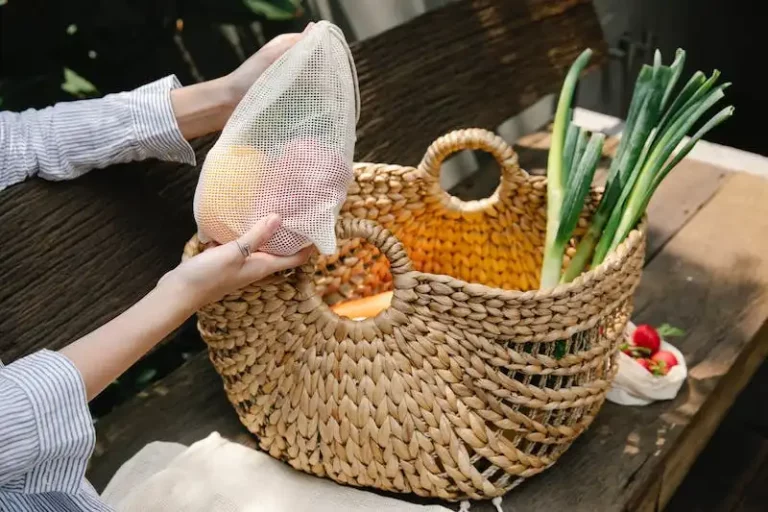A 403 error is a shortened version of the HTTP status code 403 Forbidden. When you see this error, it means that you are not allowed to access the requested resource. This can happen for various reasons, such as insufficient permissions or authentication issues.
One common cause of a 403 error is when the front of a website or web application uses a firewall or other security measures to keep unauthorized users out. These measures can be effective in protecting sensitive information, but they can also prevent legitimate users from accessing the site.
If you encounter a 403 error, there are some steps you can take to resolve the issue. First, check that you have entered the correct URL or web address. Sometimes, a simple typing error can lead to a 403 error.
Another way to avoid a 403 error is to make sure you have permission to access the resource. Some websites may require you to create an account or login before you can access certain pages or features. If you don’t have the necessary credentials, you will receive a 403 error.
In some cases, a 403 error can occur when a website owner has intentionally restricted access to certain areas of their site. This could be to protect sensitive information or to limit certain activities, such as downloading large files or accessing certain scripts.
If you continue to encounter a 403 error, it may be helpful to contact the website’s administrator or support team for assistance. They can provide guidance on how to resolve the issue and gain access to the desired resource.
In conclusion, a 403 error indicates that you do not have permission to access the requested resource. By following the tips and steps outlined above, you can better understand the cause of the error and take appropriate action to resolve it.
Pruning Fuchsias the Easy Way
Pruning fuchsias is an important part of their ongoing maintenance. By taking the time to prune these beautiful flowering plants, you can help them stay healthy and vigorous, resulting in a better garden display.
When to prune fuchsias depends on the variety and where they are planted. Generally, pruning is done in late winter or early spring when the plants are dormant. However, if you have hardy fuchsias, pruning can be done in late autumn.
To start, make sure you have the right tools for the job. Sharp pruning shears and gloves should be on hand to avoid any accidental cuts. Begin by removing any dead, withered, or weak branches to improve airflow and prevent the spread of diseases.
Next, take a step back and assess the plant’s overall shape. Fuchsias tend to become top-heavy, with most growth occurring at the top and very little below. To avoid a leggy appearance, prune back the top growth to encourage branching and a bushier shape.
When pruning, focus on shortening long branches rather than completely removing them. By doing this, you can maintain the plant’s natural form and prevent it from looking overgrown. Additionally, if you have fuchsias planted in hanging baskets or containers, you can trim the side branches to keep them more compact and tidy.
Another important aspect to consider when pruning fuchsias is deadheading. This involves removing spent flowers to encourage continuous blooming throughout the growing season. Simply pinch or cut off the faded flowers just above a leaf node to promote new growth and more flowers.
If your fuchsias have become too large for their current pots or soil, it may be necessary to repot them. Choose a container that is slightly larger and use a well-draining potting mix to ensure proper root health.
Overall, pruning fuchsias doesn’t have to be hard work. With a little knowledge and the right techniques, you can easily maintain these beautiful plants and enjoy their vibrant flowers all season long.
If you have any questions about pruning fuchsias or gardening in general, feel free to leave them in the comments below. Happy gardening!
Fuchsia Plant
A Fuchsia plant is a beautiful and eye-catching addition to any garden. Known for its stunning and vibrant flowers, these plants can bring a touch of elegance to your front yard or garden. However, like any plant, Fuchsias require proper care and attention to thrive.
If left unattended, Fuchsia plants can become overgrown and withered. Pruning is a vital step in maintaining the health and beauty of your Fuchsia plant. The initial pruning should be done in the early spring to encourage new growth and ensure a bountiful display of flowers later in the season.
When pruning your Fuchsia plant, it is important to remove any dead or withered stems. This helps to stimulate healthy growth and allows the plant to focus its energy on producing new blooms. Additionally, cutting back the main stems by one-third will help to keep the plant compact and well-shaped.
Aside from pruning, another important aspect of Fuchsia care is overwintering. Although Fuchsias are not hardy plants, some varieties can be kept alive during the winter months with proper care. To overwinter your Fuchsia plant, bring it indoors before the first frost and place it in a cool, dark location. Water sparingly and check for any signs of pests or diseases.
To encourage ongoing flowering, it is also important to deadhead your Fuchsia plant regularly. Removing faded or spent flowers will allow the plant to put its energy into producing new blooms. Additionally, Fuchsia plants can be propagated through cuttings. Simply take stem cuttings and plant them in a well-draining soil mix. Keep the soil moist and provide bright, indirect light.
In summary, caring for a Fuchsia plant requires attention to pruning, overwintering, and ongoing maintenance. By following these simple steps, you can ensure that your Fuchsia plant stays healthy and vibrant throughout the growing season. Whether you have a hardy or non-hardy variety, Fuchsias can be a beautiful and rewarding addition to your garden.
For more information on Fuchsia plant care, you can visit https://fuchsietum.com/blog/files/inca-and-the-fuchsia.php. They provide helpful tips and advice on caring for Fuchsia plants and have a wide variety of Fuchsia plants for sale.
Image source: shutterstock.com
Pruning Fuchsias
Fuchsias are beautiful flowering plants that add color and interest to any garden or hanging basket. Proper pruning is important to keep your fuchsias healthy and blooming year-round. Here are some tips on pruning fuchsias:
1. Deadheading: Fuchsias produce flowers on new growth, so removing old, faded flowers will encourage more blooms. Use sharp scissors or garden shears to remove the dead flowers behind the bloom.
2. Pinching: Pinching back the tips of the branches will help your fuchsias become bushier and produce more blooms. Pinch off the top one or two pairs of leaves from the main stem to encourage more side shoots and branching.
3. Pruning weak and leggy stems: If you notice any weak or leggy stems, it’s best to prune them back to a healthy bud or branch. This will help maintain a compact and bushy shape for your fuchsias.
4. Pruning for overwintering: Fuchsias are generally not hardy under freezing temperatures, so they need to be protected during the winter. In late autumn, prune your fuchsias back to around one-third of their original size. This will help them to overwinter more successfully.
5. Pruning hanging and trailing fuchsias: Hanging and trailing fuchsias should be pruned as they grow. Trim back any long, straggly stems to promote fuller growth and prevent them from becoming tangled or leggy.
6. Pruning mat-forming fuchsias: Mat-forming fuchsias should be kept tidy by removing any dead or decaying foliage. This will help prevent diseases and maintain the overall health of the plant.
Remember to wear gloves when pruning fuchsias, as some people may be allergic to the sap. If you’re unsure about how to prune your fuchsias, there are plenty of helpful resources and references available online. For example, you can find care tips and step-by-step instructions on pruning fuchsias at https://fuchsietum.com/blog/files/inca-and-the-fuchsia.php.
Pruning fuchsias is an ongoing task that should be done year-round to keep your plants healthy and blooming. With the right care and pruning techniques, your fuchsias will bring beauty to your garden or hanging baskets.
References: Shutterstock.com
Pinching Blooms
Pinching is an important part of caring for fuchsias. By pinching back shoots, you can encourage the plant to grow bushier and produce more flowering branches. Although it may seem counterintuitive, pinching actually helps the plant to become stronger and healthier.
When you’re pruning your fuchsias, make sure to avoid pinching them when it’s warm. Fuchsias are sensitive to heat, so it’s best to do any pruning in the early morning or late afternoon. If you trim the shoots when they’re warm, it can cause the plant to go into shock and weaken its overall health.
Pinching is an ongoing process that should be done throughout the year to keep your fuchsias looking their best. In the spring, it’s a good idea to pinch back the initial shoots to encourage bushier growth. During the summer, you can continue to pinch back any leggy or overgrown shoots to maintain a compact shape.
Repotting is another important part of fuchsia care. Fuchsias are heavy feeders and will benefit from being repotted every year or two. When repotting, make sure to use a well-draining potting mix and be careful not to damage the plant’s roots.
If you have trailing fuchsias, you may need to use a support system, such as a hanging basket or trellis, to keep them from falling over. Trailing fuchsias can be especially prone to damage from wind and rain, so it’s important to make sure they are securely planted.
When it comes to overwintering your fuchsias, there are a few different options. Some gardeners prefer to keep their fuchsias indoors in a cool, dark place, such as a basement or garage. Others choose to leave their fuchsias outside, but protect them from frost by wrapping the plants in burlap or bringing them into a sheltered area.
Deadheading is an important part of fuchsia maintenance. By removing spent flowers, you can encourage the plant to continue blooming. Deadheading can be done by simply pinching off the faded flowers with your fingertips or using a pair of garden shears.
Fuchsias come in many different shapes and sizes, so it’s important to choose the right variety for your garden. Some fuchsias are bushy and compact, while others are more trailing and suitable for hanging baskets. Whatever type of fuchsia you choose, make sure to give it the care it needs to thrive.
In conclusion, pinching is an easy and effective way to care for your fuchsias. By pinching back shoots and pruning the plant when necessary, you can help promote healthy growth and ensure beautiful flowers year-round. With a little bit of care and attention, fuchsias can be a stunning addition to any garden.
References:
- My, Sutton. “Fuchsia Care – Fuchsia Care Guide”. Suttons, 2024, https://www.suttons.co.uk/gardening-advice/how-to-grow-flower-plants/all-go-gardening-blog/how-to-care-for-fuchsias.
- Secretary, Reference. “Fuchsia Care Calendar”. Reference Secretary, 2024, https://www.referenceseqwiki.com/fuchsia-care-calendar/.



